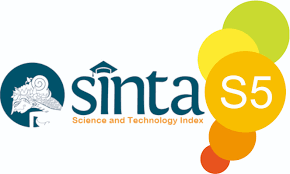GAMBARAN CHARACTER STRENGTHS PADA REMAJA YANG BERMINAT TERHADAP PERTANIAN
Abstract
Tujuan dari penelitian ini adalah untuk mengetahui kekuatan karakter (character strengths) yang dimiliki oleh mahasiswa yang berminat terhadap pertanian. Pertanian adalah kegiatan menanam (bercocok tanam), memelihara tanaman, hingga membuahkan hasil. Pertanian merupakan salah satu tujuan yang dicanangkan oleh PBB dalam rangka pelestarian kehidupan di muka bumi (on the land / SDGs No. 12). Individu yang berminat terhadap pertanian memiliki sejumlah kekuatan karakter (character strengths) yang menarik untuk dipahami. Menurut Peterson dan Seligman (2004) kekuatan karakter terdiri dari enam kebajikan inti, yaitu: (a) kemanusiaan (humanity), (b) keadilan (justice), (c) kesederhanaan (temperance), (d) keberanian (courage). (e) kebijaksanaan (wisdom), dan (f) transenden (transcendence). Partisipan penelitian ini berjumlah tiga orang, terdiri dari satu laki-laki, dan dua orang perempuan berusia 21-22 tahun; pernah ikut serta dalam program pelestarian/pengembangan pertanian. Pengambilan data dilakukan dengan metode wawancara. Hasil analisis menunjukkan bahwa partisipan memiliki indikasi kekuatan karakter: humanity (love, kindness), justice (fairness, teamwork, leadership), wisdom (judgement [open mindedness], love of learning, curiosity), transcendence (hope, humor).
References
Carmel Proctor, P. Alex Linley & John Maltby (2009) Youth life satisfaction measures: a review, The Journal of Positive Psychology, 4:2, 128-144, https://doi.org/10.1080/17439760802650816
Davidsen AS. Phenomenological Approaches in Psychology and Health Sciences. Qual ResPsychol. (2013) Jul;10(3):318-339. https://doi.org/10.1080/14780887.2011.608466
Gilbert, P., & Procter, S. (2006). Compassionate mind training for people with high shame and self-criticism: Overview and pilot study of a group therapy approach. Clinical Psychology & Psycho- therapy: An International Journal of Theory & Practice, 13(6),353–379. https://doi.org/10.1002/cpp.507
Govindji, Reena & Linley, P.. (2007). Strengths use, self-concordance and well-being: Implications for Strengths Coaching and Coaching Psychologists. International Coaching Psychology Review. 2(2),143–153. DOI:10.53841/bpsicpr.2007.2.2.143
Hakanen, J., & Pessi, A. B. (2018). Practicing compassionate leadership and building spirals of inspiration in business and in public sector. In Springer eBooks (pp. 119–140). https://doi.org/10.1007/978-3-319-75644-8_8
J.A. Smith, P. Flower and M. Larkin (2009), Interpretative Phenomenological Analysis: Theory, Method and Research.." , 6(4), pp. 346–347 .https://doi.org/10.1080/14780880903340091.
Kirby, J. N. (2016). Compassion interventions: The programmes, the evidence, and implications for research and practice. Psychology and Psychotherapy: Theory, Research and Practice, 90(3), 432–455. https://doi.org/10.1111/papt.12104
Langdridge, Darren (2007). Phenomenological Psychology: Theory, Research and Method. Harlow, UK: Pearson Education.
URL: http://www.pearsoned.co.uk/Bookshop/detail.asp?ite…Lilius, J. M., Worline, M. C., Dutton, J. E., Kanov, J., & Maitlis, S. (2011). Understanding compassion capability. Human Relations, 64(7), 873–899. https://doi.org/10.1177/0018726710396250
Lipponen, L., Rajala, A., & Hilppö, J. (2018). Compassion and emotional worlds in early childhood education. Pedagogic innovations in early childhood education in cross cultural contexts. DOI: http://dx.doi.org/10.4324/9780203732052-11
Misty et al,.(2020) Group Art Therapy untuk meningkatkan self-esteem remaja di LPKA TNG.. https://doi.org/10.24912/jmishumsen.v4i1.3872.2020
Peterson, C. & Seligman, M.E.P. (2004). Character strengths and virtues: A handbook and classification. New York: Oxford University Press, Inc. https://books.google.co.id/books?id=vKzmCwAAQBAJ&lpg=PR9&ots=sTefbGo7y1&lr&hl=id&pg=PA3#v=onepage&q&f=false
Pujiriyani DW et al ,. (2016). Sampai kapan pemuda bertahan di pedesaan? kepemilikan lahan dan pilihan pemuda untuk menjadi petani. BHUMI J Agraria dan Pertanahan. 2(2):209. https://doi.org/10.31292/jb.v2i2.72
Paakkanen, M., Martela, F., Hakanen, J. et al. Awakening Compassion in Managers—a New Emotional Skills Intervention to Improve Managerial Compassion. J Bus Psychol 36, 1095–1108 (2021). https://doi.org/10.1007/s10869-020-09723-2
Pertanian. (2023, November 8). In Wikipedia. https://id.wikipedia.org/w/index.php?title=Pertanian&oldid=24752375
Suwito, et al., (2020) Tinjauan berbagai aspek: Character building. Yogyakarta: Tiara Wacana. https://staffnew.uny.ac.id/upload/131576240/penelitian/Learning+Society+sebagai+Sarana+Mencapai+Generasi+Penerus+yang+Memiliki+Jati+Diri+Bangsa+Indonesia+(2008).pdf
Smith, J. A. (2011). Evaluating the Contribution of Interpretive Phenomenological Analysis. Health Psychology Review, 5, 9-27. https://doi.org/10.1080/17437199.2010.510659
Van Manen M. But Is It Phenomenology? Qualitative Health Research. (2017) ;27(6):775-779. https://doi.org/10.1177/1049732317699570
Vuorinen, K., Pessi, A.B. & Uusitalo, L. Nourishing Compassion in Finnish Kindergarten Head Teachers: How Character Strength Training Influences Teachers’ Other-Oriented Behavior. Early Childhood Educ J 49, 163–176 (2021). https://doi.org/10.1007/s10643-020-01058-0
Zamralita Zamralita (2017). Gambaran Keterikatan Kerja pada Dosen-Tetap Ditinjau dari Karakteristik Personal | Jurnal Muara Ilmu Sosial, Humaniora, dan Seni, https://doi.org/10.24912/jmishumsen.v1i1.374
Hakanen, J., & Pessi, A. B. (2018). Practicing compassionate leadership and building spirals of inspiration in business and in public sector. In Springer eBooks (pp. 119–140). https://doi.org/10.1007/978-3-319-75644-8_8
Kirby, J. N. (2016). Compassion interventions: The programmes, the evidence, and implications for research and practice. Psychology and Psychotherapy: Theory, Research and Practice, 90(3), 432–455. https://doi.org/10.1111/papt.12104
Lilius, J. M., Worline, M. C., Dutton, J. E., Kanov, J., & Maitlis, S. (2011). Understanding compassion capability. Human Relations, 64(7), 873–899. https://doi.org/10.1177/0018726710396250
Proctor, C., Linley, P. A., & Maltby, J. (2009). Youth life satisfaction measures: a review. The Journal of Positive Psychology, 4(2), 128–144. https://doi.org/10.1080/17439760802650816
Tindall, L. (2009). J.A. Smith, P. Flower and M. Larkin (2009), Interpretative Phenomenological Analysis: Theory, Method and Research. Qualitative Research in Psychology, 6(4), 346–347. https://doi.org/10.1080/14780880903340091
Van Manen, M. (2017). But is it phenomenology? Qualitative Health Research, 27(6), 775–779. https://doi.org/10.1177/1049732317699570
Vuorinen, K., Pessi, A. B., & Uusitalo-Malmivaara, L. (2020). Nourishing Compassion in Finnish Kindergarten Head Teachers: How Character Strength Training Influences Teachers’ Other-Oriented behavior. Early Childhood Education Journal, 49(2), 163–176. https://doi.org/10.1007/s10643-020-01058-0
Restu Nadya, & Linda Wati. (2023). PROBLEMATIC INTERNET USE DAN KUALITAS TIDUR PADA DEWASA AWAL. Journal of Social and Economics Research, 5(2), 412-419. https://doi.org/10.54783/jser.v5i2.150
Putri Diana, & Agustina. (2023). GAMBARAN PERSEPSI PERNIKAHAN PADA PEREMPUAN DEWASA MUDA DENGAN LATAR BELAKANG ORANG TUA BERCERAI DAN FATHERLESS . Journal of Social and Economics Research, 5(2), 720-731. https://doi.org/10.54783/jser.v5i2.181
Fanny Febrianti, & Untung Subroto. (2023). HUBUNGAN POLA ASUH DENGAN KOMUNIKASI INTERPERSONAL PADA REMAJA . Journal of Social and Economics Research, 5(2), 799-811. https://doi.org/10.54783/jser.v5i2.183



















